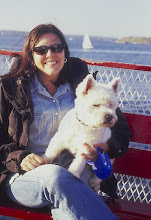
What have I been up to?
Lots of writing assignments, a minor home renovation project, some time off to relax, and a day on the set of Emeril’s new Planet Green cooking show. More about that in my next post…

Some of you have asked what happened to The Mystery Project, which I was working on for the last 10 months and which I blogged about earlier this year.
Unfortunately, I was unable to reach agreement on a contract with the person who held the primary contract with the publisher (this happens occasionally in publishing) and I am no longer associated with the project.

I’d say more but the censors wouldn’t approve.

Since my last post was about China, I figure we’d take a short detour to the remote Himalayan kingdom of Bhutan on our way back to the beach.

My fascination with Bhutan, began may years ago. How could you not be intrigued by a land that’s home to the world’s only blue poppies and blue sheep?

Every July, Washington’s Smithsonian Institution...

hosts a weeklong festival on The Mall, the grassy park that runs from the Lincoln Memorial to the Capitol.

This year the forty-second annual Folklife Festival celebrated the state of Texas, NASA (National Aeronautics and Space Administration) and Bhutan.

On the opening day, while touring the festival’s a traditional Bhutanese Buddhist temple with a flock of journalists, I met a strikingly handsome young man.

The friendly Bhutanese turned out to be the king! He’s a great ambassador for a country with a development program measured by the country’s Gross National Happiness.

Imagine what life would be like if all governments ensured the contentment of their people and tried to balance economic growth and modernization with quality of life and spiritual values!

Throughout the day, you could watch and participate in demonstrations of Bhutan’s 13 traditional arts.

These include bamboo basketry...

woodworking...

metalurgy...

leatherwork and embroidery.

The finest examples of Bhutanese design were amazing and had been passed from one generation to another for centuries.

Each region of Bhutan has distinctive traditional weaving and clothing styles.

Dyes are made from vegetables and minerals.

Patterns have symbolic meanings.

You could also listen to Bhutanese music played on long trumpets, oboe-like instruments, double-sided drums and conch horns…

Watching traditionally garbed Bhutanese, who had rarely left their small mountain villages, whip out cell phones to snap photos of typical Americans was entertaining, too.

What is Bhutanese food like, you ask? In brief... spicy!

Unlike other parts of the world, where chilies are used as a spice to flavor food, here chilies are served as a vegetable. Each day at the festival, the cooking demos of chili cheese curry (the national dish of Bhutan) were a crowd favorite.
Want to cook something different—and fiery—for tonight’s dinner? Here’s the recipe:
This hot pepper and cheese stew is usually made with yak cheese but I was assured feta cheese works well.
CHILI CHEESE STEW
1/2 lb hot green chilis (long serranos, shorter jalapenos or less spicy poblanos)
1 medium onion, diced
3/4 cups water
2 tsp olive or vegetable oil
2 tomatoes, diced
4 cloves garlic, chopped
1/2 lb feta cheese
1/2 tsp. fresh cilantro leaves, chopped
Remove seeds from chilis and cut lengthwise into strips. In a saucepan, add chilies, onions, oil and water bring to a boil, then simmer 15 minutes. Add tomato and garlic and simmer for 5 more minutes. Just before serving add cheese and cilantro leaves. Heat through but do not let cheese dissolve. Serve over rice.

Now… to the beach.
Back in July, I posted about my trip to the Chesapeake Bay. I had such a great time that I decided to do it again.
So as the sun sets on summer, here’s another peek at one of my favorite places to get away from the world.

*** BLOGS DU JOUR *** Recently, Fifi Flowers asked my permission to turn one of my photographs of the Getty Villa into a painting. I was flattered and now you can see what a talented artist can do with a little inspiration.
Recently, Fifi Flowers asked my permission to turn one of my photographs of the Getty Villa into a painting. I was flattered and now you can see what a talented artist can do with a little inspiration.
 Recently, Fifi Flowers asked my permission to turn one of my photographs of the Getty Villa into a painting. I was flattered and now you can see what a talented artist can do with a little inspiration.
Recently, Fifi Flowers asked my permission to turn one of my photographs of the Getty Villa into a painting. I was flattered and now you can see what a talented artist can do with a little inspiration. Looking for your own inspirations? Visit Sweet Six Studio, an on-line art retreat hosted by Holly Abston, Natasha Burns, Cheryl Dack, Jennifer Hayslip, Heather Kowalski and Analise Sledd. It starts on September 2nd, so you’d better hurry!
Looking for your own inspirations? Visit Sweet Six Studio, an on-line art retreat hosted by Holly Abston, Natasha Burns, Cheryl Dack, Jennifer Hayslip, Heather Kowalski and Analise Sledd. It starts on September 2nd, so you’d better hurry!































